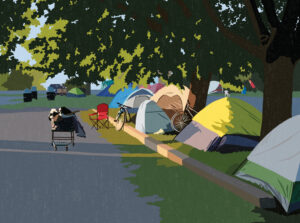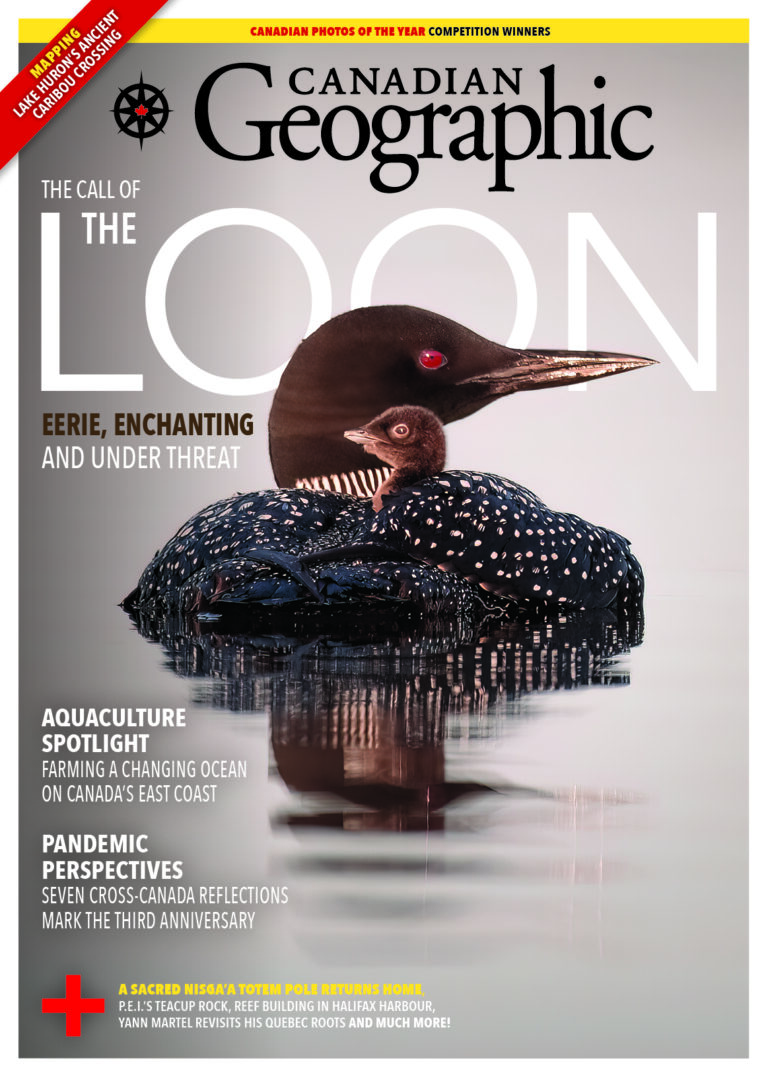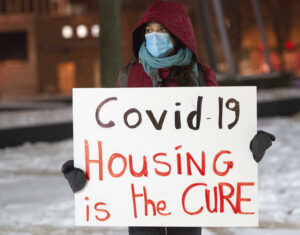
People & Culture
Placing the Pandemic in Perspective: Coping with curfew in Montreal
For unhoused residents and those who help them, the pandemic was another wave in a rising tide of challenges
- 2727 words
- 11 minutes
People & Culture
When the pandemic hit, urban Canadians hit the parks. But are urban parks accessible to all?

Placing the Pandemic in Perspective is a multimedia project to collect and share how Canadians’ experiences of the COVID-19 pandemic were — and continue to be — shaped by place. Visit the project website to read more stories and add your own.
When the pandemic struck, I was just weeks away from beginning a university program. My school, Concordia University in Montreal, pivoted to deliver my journalism classes remotely, assuring us that educational integrity wouldn’t be compromised. But the social aspect of university life for young people across the country fell by the wayside.
Shops were shuttered, and bars and pubs closed. Restaurants were redone as takeout counters. Public libraries reached levels of silence even the strictest of librarians could only have dreamt of, completely closing all spring, then opening only for contactless pickups and returns. And so, urban parks became a green lifeline for many Canadians. My classmates and I were among those newly minted park enthusiasts. Our first cohort meetup at Montreal’s La Fontaine Park was masked, socially distanced and just a little bit weird.
The 2021 Canadian City Parks Report by Park People, a national charity that collects data on — and supports — urban parks across the country, reported that 94 per cent of cities logged an increase in park use in 2020. Of the 3,500 city dwellers surveyed, two-thirds said they had spent more time in parks. In fact, 40 per cent said their park use had doubled.

“We knew that park use increased during the pandemic — everybody sort of knew that intuitively,” says Jake Tobin Garrett, writer of the 2021 report. “But the data showed that this was by a huge amount, more than I expected.” Parks were filling a real need, and it showed.
Urban parks had become the new town hall. For me, living alone and carless in one of the most stringently locked down cities in the country, the local park became my pub, restaurant, study spot and gym. It was also my therapist, a place to unwind after navigating a live radio newscast delivered via Zoom or to reflect on the fact my professor had just taught a virtual class from his hospital bed. And many others felt the same. Some 85 per cent of Canadians said parks became more important for their mental health during the pandemic, and 81 per cent said the same for their physical health.
But a closer look at the report shows that not everyone had equal access to these benefits. “Canadians who identified as Black, Indigenous or a person of colour were less likely to report that parks had a mental and physical health benefit in 2020,” says Garrett. Those same Canadians were also more likely to experience barriers related to ticketing and fear of harassment or discrimination. In the case of harassment, they reported being targeted twice as often as white respondents who completed the survey.
These barriers can partly be attributed to the way parks are staffed. Minaz Asani-Kanji, manager of outreach at Park People, noted in the 2021 report that Black people and people of colour are rarely seen in senior leadership positions in the public sector, though some cities are making strong efforts to hasten positive change.
In Thunder Bay, Ont., specialized city staff include an Indigenous inclusion and relations manager and an Indigenous liaison, both of whom are cooperating on concrete solutions to decolonize and Indigenize public spaces. And in Edmonton, the Indigenous Framework is a commitment to build strong relationships with Indigenous people as part of all city operations. However, many challenges still need to be addressed to make sure everyone is comfortable, be it as a park staffer or a park visitor.
The 2022 report, published in June, shows the upward trend continuing in the second year of the pandemic. Seventy-six per cent of municipalities reported that park use increased in 2021 compared with the previous year, and 55 per cent of city residents reported spending even more time in parks than they did in 2020. A strong social theme emerged in the survey responses: city residents want parks to be places for all. Some 87 per cent of respondents would like to see more native plants in parks, 68 per cent would like to see more Indigenous representation in parks through art and public signage, and 59 per cent are in favour of renaming park spaces to restore Indigenous place names.
The pandemic has magnified what’s good about city parks as well as the need to make them more inclusive. Who knows when we will need our lifeline next?
Are you passionate about Canadian geography?
You can support Canadian Geographic in 3 ways:

This story is from the March/April 2023 Issue

People & Culture
For unhoused residents and those who help them, the pandemic was another wave in a rising tide of challenges

People & Culture
The death of an unhoused Innu man inspired an innovative and compassionate street outreach during the nightly curfew in 2021

Places
In Banff National Park, Alberta, as in protected areas across the country, managers find it difficult to balance the desire of people to experience wilderness with an imperative to conserve it

People & Culture
The story of how a critically endangered Indigenous language can be saved